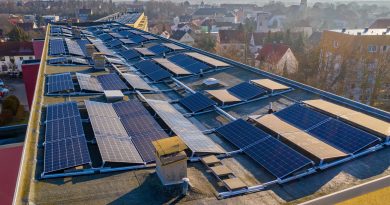Solar Power System for Universities
Universities play a crucial role in society. So setting up solar power system for universities us very important. These institutions should strive to become more sustainable and environmentally friendly. In this blog, we will explore the benefits of implementing solar power systems in universities and how they can contribute to a greener campus and a brighter future.
Table of Contents
Benefits of Solar Power Systems in Universities
One of the primary advantages of installing solar power systems in universities is the opportunity to reduce carbon emissions and combat climate change. By generating clean, renewable energy from the sun, universities can significantly decrease their reliance on fossil fuels and lower their overall carbon footprint. This not only helps to protect the environment but also sets a positive example for students, faculty, and the community.
Additionally, solar power systems can lead to substantial cost savings for universities. While the initial investment may be significant, the long-term benefits are undeniable. By producing their own electricity through solar panels, universities can lower their energy bills and potentially even generate revenue by selling excess power back to the grid. This financial savings can then be reinvested into other sustainability initiatives or academic programs.
Moreover, installing solar power systems can enhance the resiliency of universities in the face of power outages or natural disasters. By having an independent source of energy that is not reliant on the traditional grid, universities can ensure that critical facilities remain operational during emergencies. This can be particularly crucial during times of crisis when access to electricity is essential for communication, research, and safety.
Implementation of Solar Power Systems in Universities
When it comes to implementing solar power systems in universities, there are several factors to consider. One of the first steps is conducting a thorough energy audit to assess the current energy usage and identify opportunities for solar integration. This data can help determine the size and placement of solar panels, as well as the overall feasibility of the project.
Collaboration with solar energy experts and installation companies is also essential for a successful solar power system project. Universities can benefit from partnering with experienced professionals who can offer guidance on system design, equipment selection, and maintenance. Additionally, working with reputable vendors can ensure that the solar panels meet industry standards and are installed safely and efficiently.
Another key aspect of implementing solar power systems in universities is engaging stakeholders and promoting awareness. By involving students, faculty, staff, and the local community in the decision-making process, universities can build support for the project and foster a culture of sustainability on campus. Hosting educational events, workshops, and tours can also help raise awareness about the benefits of solar energy and inspire others to embrace renewable technologies.
Case Studies of Solar Power Systems in Universities
Several universities across the globe have successfully implemented solar power systems and are reaping the benefits of this sustainable energy source. For example, the University of California, San Diego (UCSD) has one of the largest university solar installations in the United States, with over 20 megawatts of capacity. This system not only provides clean energy for the campus but also serves as a research platform for students and faculty studying renewable energy technologies.
In Australia, the University of Queensland (UQ) has installed solar panels on various campus buildings and car parks, generating over 4,000 megawatt-hours of electricity annually. This initiative has helped UQ reduce its carbon emissions and achieve its sustainability goals while also saving millions of dollars in energy costs. The university has plans to further expand its solar capacity and continue leading the way in sustainable practices.
Conclusion
As universities strive to become more sustainable and environmentally conscious, solar power systems offer a viable solution for reducing carbon emissions, cutting costs, and enhancing resiliency. By investing in solar energy, universities can demonstrate their commitment to sustainability, educate the next generation of leaders, and contribute to a greener future for all. With the right planning, collaboration, and engagement, solar power systems can transform universities into beacons of clean energy innovation and environmental stewardship. So, installing solar power system for universities is very important.




